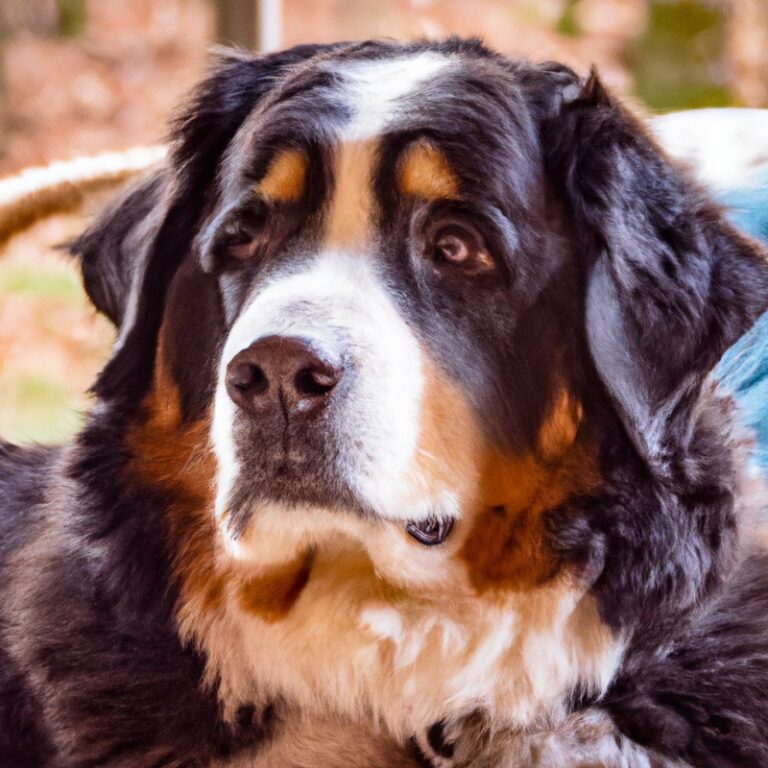What Are The Essential Commands Every Bernese Mountain Dog Should Learn?
Key Takeaways:
- Sit, stay, and come are essential commands for Bernese Mountain Dogs.
- Training commands like leave it and drop it can be crucial for their safety.
- Basic obedience commands help establish a strong bond and control over your Bernese Mountain Dog.
- Consistency and positive reinforcement are key in successfully teaching essential commands to Bernese Mountain Dogs.
Hey there, Bernese Mountain Dog lovers! Are you ready to unlock the full potential of your furry friend?
Well, you’ve come to the right place! As a proud Bernese Mountain Dog owner myself, I can’t emphasize enough the importance of training for these gentle giants.
In this blog, I’ll walk you through the essential commands every Bernese Mountain Dog should learn.
From building a strong foundation with basic commands like “sit” and “stay,” to mastering advanced tricks like “heel” and “place,” we’ll cover it all.
Plus, I’ll answer some burning questions you may have along the way.
So, grab a treat and let’s get started!
| Command | Description |
| Sit | Teaches the dog to sit and wait for further commands |
| Stay | Teaches the dog to stay in one place until released |
| Come | Teaches the dog to come back to the owner when called |
| Down | Teaches the dog to lie down on the ground |
| Heel | Teaches the dog to walk calmly by the owner’s side |
| Leave it | Teaches the dog to leave any item or food on command |
| Off | Teaches the dog to get off furniture or people |
| Drop it | Teaches the dog to release items from their mouth |
Importance of Training for Bernese Mountain Dogs
Building a Strong Foundation: Basic Commands
Building a strong foundation for your Bernese Mountain Dog starts with teaching them basic commands. These commands will help establish a clear line of communication between you and your dog.
Some essential basic commands for Bernese Mountain Dogs include:
- “Sit”: Teaching your dog to sit on command is fundamental. It helps with impulse control and prepares them for other commands.
- “Stay”: This command is crucial for keeping your dog safe in various situations. It teaches them to stay in one place until you give them permission to move.
- “Lie Down”: Similar to “sit,” teaching your Bernese Mountain Dog to lie down on command helps with control and can be useful in instances when you want them to stay calm.
- “Come”: The recall command is vital for keeping your dog out of harm’s way and ensuring they come back to you when called.
- “Leave It”: This command helps prevent your dog from picking up or engaging with harmful objects or substances they may encounter.
By consistently practicing and reinforcing these basic commands, you can lay a strong foundation for your Bernese Mountain Dog’s training. Remember to use positive reinforcement techniques, such as treats and praise, to motivate and reward your dog for their obedience.

Sit Command and Its Importance
The “Sit” command is an essential skill for every Bernese Mountain Dog to learn. It provides the foundation for good behavior and sets boundaries for your dog.
Teaching your Bernese Mountain Dog to sit on command helps promote obedience, improves communication, and enhances safety.
It also helps to prevent jumping, chasing, and other unwanted behaviors. By consistently practicing the “Sit” command, you establish yourself as the pack leader and create a respectful and well-behaved companion.
Stay Command for Safety and Control
The “Stay” command is crucial for ensuring the safety and control of your Bernese Mountain Dog. When you teach your dog to stay, you are giving them a command to remain in one place until you release them.
This command can be incredibly valuable in various situations, such as when you need your dog to stay put to prevent accidents, maintain control in public places, or for their own safety.
By teaching your Bernese Mountain Dog to stay, you’ll have much greater peace of mind in different scenarios.

Recall Command: Coming When Called
The recall command, or coming when called, is an essential skill for Bernese Mountain Dogs.
It ensures their safety and allows you to have control in different situations.
To train this command, start in a distraction-free environment and use positive reinforcement.
Begin by calling your dog’s name followed by the recall command.
When they come to you, reward them with praise and treats.
Gradually increase the distractions and practice the recall command in different environments.
Remember to be patient and consistent in your training.

Down Command: Teaching your Dog to Lie Down
Teaching your dog to lie down is an essential command to ensure obedience and control.
Here’s how you can do it:
- Start with a treat in your hand, and hold it close to your dog’s nose.
- Slowly lower your hand to the ground, allowing your dog to follow the treat with their nose.
- As your dog’s body lowers to the ground, say the command “down” in a firm but gentle tone.
- When your dog is fully down, reward them with the treat and praise.
- Repeat this process several times, gradually phasing out the treat and relying on the command alone.
- Practice in different environments to reinforce the command’s importance and build reliability.
Remember, patience and consistency are key.
Keep training sessions short and positive, and always reward your dog for their efforts.
Walking on a Leash: Training your Bernese Mountain Dog to Walk Nicely
Training your Bernese Mountain Dog to walk nicely on a leash is essential for a pleasant and safe walking experience. Start by introducing your dog to the leash gradually and reward them for positive behavior.
Use positive reinforcement, such as treats and praise, to encourage them to walk beside you without pulling.
Consistency and patience are key in teaching them to walk politely on a leash. Practice in different environments to reinforce their training.
Good leash manners will make your walks more enjoyable for both you and your dog.
Leave It Command: Teaching your Dog to Let Go of Things
Teaching your dog the “Leave It” command is essential for their safety and well-being.
Here’s how you can do it:
- Start by holding a treat in your closed hand and say “leave it.”
- When your dog stops trying to get the treat from your hand, reward them with a different treat.
- Practice this exercise with various objects and gradually increase the difficulty.
- Once they’ve mastered the command, you can use it to prevent them from picking up dangerous objects or eating something harmful.
Remember to be patient and consistent with your training.
With practice, your dog will learn to let go of things on command to keep them safe.
Advanced Commands for Bernese Mountain Dogs
Off Command: Teaching your Dog to Jump Down
Teaching your Bernese Mountain Dog to jump down on command can be a useful skill. Start by getting their attention with a treat.
Then, give the “off” command while tapping the ground or pointing down.
Once they jump down, reward them with praise and a treat. Practice this command in different situations to reinforce the behavior.
Remember to be patient and consistent with your training.
Happy jumping!
Heel Command for Better Leash Manners
To improve your Bernese Mountain Dog’s leash manners, teach them the “heel” command. With this command, your dog will learn to walk calmly by your side without pulling.
Start by holding a treat by your side and use it to guide your dog into position.
Reward them for staying in the correct position and gradually increase the duration of the heel command while walking. Consistency and patience are key.
Practice this command regularly to reinforce good leash manners.
Wait Command: Teaching your Dog to Pause
Teaching your dog the “Wait” command is important for their safety and your peace of mind. To teach this command, start by using a leash or a boundary.
Step away from your dog and say “Wait” in a calm but firm voice.
If your dog starts to move, gently guide them back to the original position. Repeat this process, gradually increasing the distance and time.
Reward your dog with treats and praise when they successfully wait.
With consistency and practice, your dog will learn to pause and wait for your cue.
Drop It Command: Preventing Resource Guarding
The “Drop It” command is crucial for preventing resource guarding in Bernese Mountain Dogs. It teaches them to release items they have in their mouths without any resistance.
By consistently practicing this command, you can establish trust and prevent aggression when it comes to their possessions.
To train your Bernese Mountain Dog to drop items, follow these steps:
- Start with low-value items and offer a tasty treat as a trade.
- Say “Drop It” and wait for them to release the object.
- Reward them immediately with the treat and praise.
- Gradually increase the difficulty by using higher-value items.
Remember to practice in a calm and positive environment, ensuring the safety of both you and your dog.
Place Command: Teaching your Dog to Go to a Designated Spot
Teaching your Bernese Mountain Dog the “Place” command is a valuable skill to have.
It involves training your dog to go to a specific spot, like a mat or a bed, and stay there until you release them.
Here’s a simple approach to teaching this command:
- Choose a designated spot in your home where you want your dog to go.
- Start by using a leash to guide your dog to the chosen spot.
- Say the command “Place” and use a treat as a reward when your dog successfully goes to the spot.
- Gradually increase the distance between you and the spot, using the leash if necessary to guide your dog.
- Repeat the command and reward consistently until your dog understands what “Place” means.
- Practice the command in different locations and gradually fade out the use of the leash.
Remember, consistency and positive reinforcement are key when teaching this command.
With practice, your Bernese Mountain Dog will become proficient in going to their designated spot on command.
Frequently Asked Questions
How long does it take to train a Bernese Mountain Dog?
Training a Bernese Mountain Dog can take anywhere from several weeks to several months, depending on the individual dog and the consistency of training. BMDs are intelligent and eager to please, but they can also be stubborn.
It’s important to start training early and be patient and persistent.
Remember to use positive reinforcement techniques and keep training sessions short and fun. Consistency and repetition are key to successfully training a Bernese Mountain Dog.
Can I train my Bernese Mountain Dog on my own or do I need professional help?
You can definitely train your Bernese Mountain Dog on your own! These dogs are intelligent and eager to please, making them great candidates for training.
With consistency, patience, and positive reinforcement, you can teach them essential commands like sit, stay, and come.
However, if you’re a first-time dog owner or if you feel overwhelmed, professional help from a dog trainer can offer guidance and expertise to ensure effective training and a well-behaved pup.
It ultimately depends on your comfort level and the specific needs of your dog.
Are Bernese Mountain Dogs stubborn to train?
Bernese Mountain Dogs can be independent thinkers, which can make training a bit challenging at times. However, with patience, consistency, and positive reinforcement, they can be successfully trained.
It’s important to establish yourself as the leader and provide clear, firm, and kind instructions.
Keep training sessions short and engaging to hold their attention. Socialization is also crucial to help them become well-rounded and obedient dogs.
Can Bernese Mountain Dogs learn advanced tricks and commands?
Bernese Mountain Dogs are intelligent and capable of learning advanced tricks and commands.
With consistent training, they can master a variety of impressive skills like agility, obedience, and even therapy work.
Some advanced commands they can learn include heel, stay, roll over, speak, and many more.
It’s important to use positive reinforcement, patience, and consistency when training a Bernese Mountain Dog.
Start with basic commands and gradually progress to more advanced ones, and always remember to keep the training sessions fun and engaging.
What should I do if my Bernese Mountain Dog is not responding to commands?
If your Bernese Mountain Dog is not responding to commands, there are a few things you can try:
- Evaluate your training techniques: Reflect on how you are teaching commands. Are you using positive reinforcement, consistency, and patience?
- Increase motivation: Make sure you’re using enticing rewards like treats or praise to motivate your dog to respond.
- Check for distractions: Ensure you’re training in a quiet, distraction-free environment. If there are distractions, gradually introduce them as your dog becomes more responsive.
- Seek professional help: If you’re struggling to get your dog to respond, consider consulting a professional dog trainer who can provide guidance on effective training techniques tailored to your specific situation.
Remember, dogs learn at their own pace, so be patient and persistent in your training efforts.
Final Verdict
Training is of utmost importance for Bernese Mountain Dogs to ensure their safety, control, and overall well-being.
By building a strong foundation with basic commands like sit, stay, recall, and down, you can establish a strong bond and effective communication with your dog.
Advanced commands such as off, heel, wait, drop it, and place further enhance their obedience and manners.
While professional help is beneficial, dedicated owners can train their Bernese Mountain Dogs themselves.
Patience, consistency, and positive reinforcement are key in overcoming their occasional stubbornness.
Remember, training is not just about obedience; it’s also about enriching your dog’s life and strengthening your bond.






